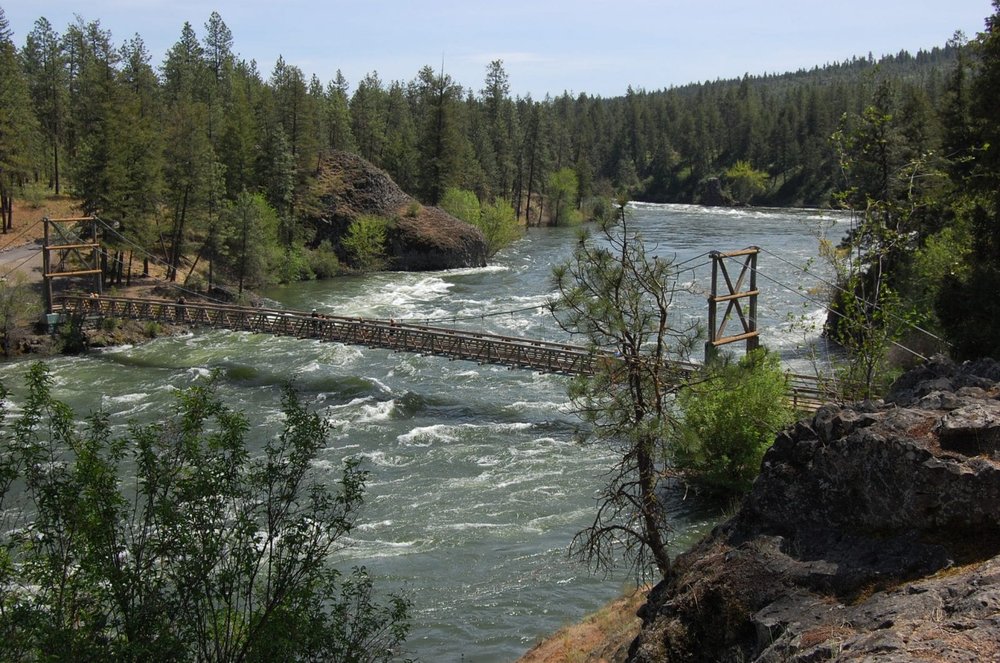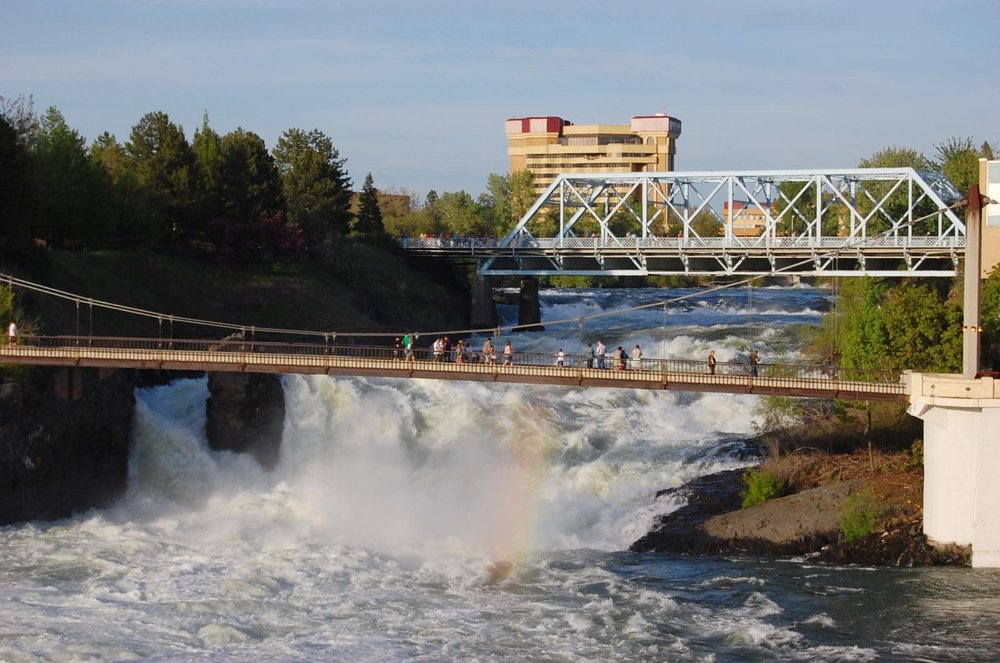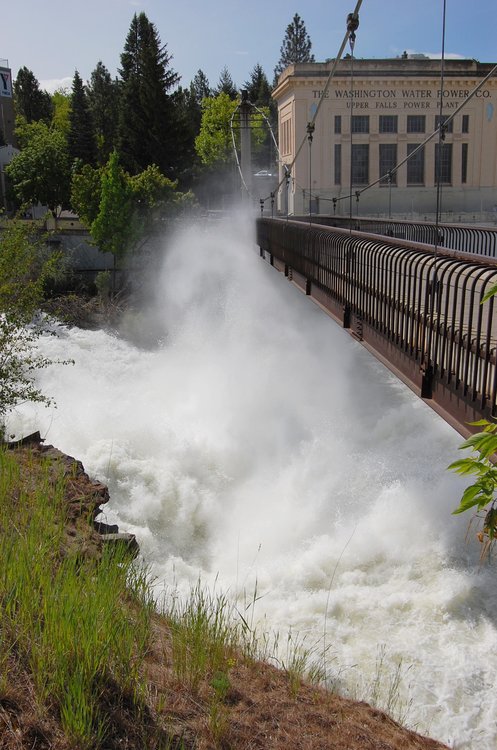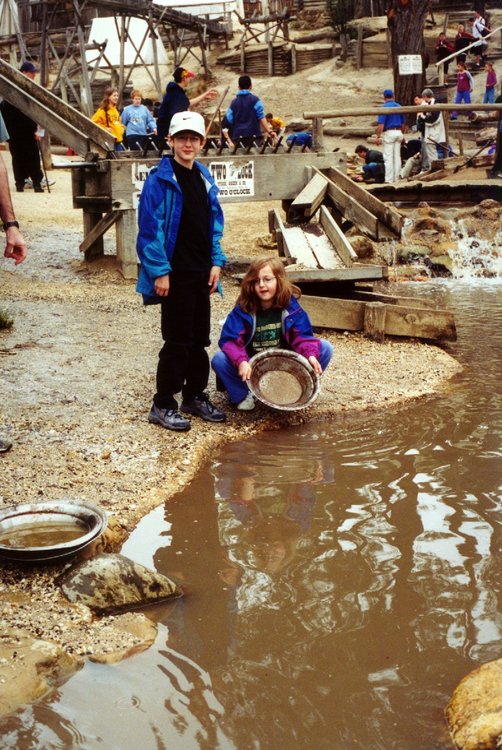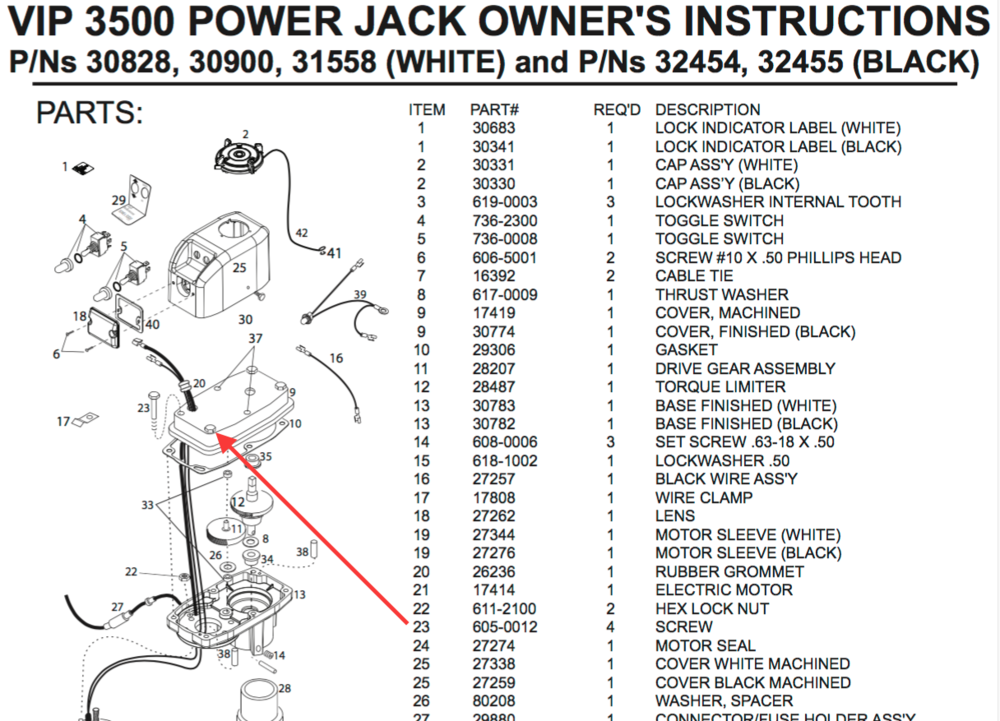-
Posts
5,759 -
Joined
-
Last visited
-
Days Won
243
Everything posted by John E Davies
-
This is a very good summary of what it is like to haul your trailer from the Deep South to Alaska and back. I wasn't sure where to post this, but they do have a section on boondocking (a third of their nights were free spots) so I thought it could go here. John Davies Spokane WA
-
Easy in many ways to refill a 20 pounder, which is the "standard " size. You can even swap out your empty bottle for a filled one at many places like Home Depot. Be aware it will not look brand new. http://www.homedepot.com/p/AMERIGAS-Propane-Tank-Exchange-204S/202317242 It is a great idea to carry a spare one for reserve ONLY IF you have a place to secure it properly outside the TV or trailer. The open bed of a pickup would be acceptable, if it can't move. Inside a sealed compartment or vehicle is strictly forbidden. I ordered the 30 pounders and I don't care about the other aspects and I don't want to deal with an extra one. I just want a lot of built-in gas. If Oliver would start using marine diesel fired appliances, then we could carry a five gallons of the stuff very safely and it would last for months.... Oh well. Maybe in 2027... John Davies Spokane WA
-
That white hose looks like a piece of drinking water garden hose. It also appears to have a little crimp at the tee. Please tell me that it is something else. A potable water hose would not make the water hazardous in any way, but it wouldn't be the best choice for a long term fixed installation. Maybe it is a specialty hot water hose of some kind? I have seen pics of that kind of hose used for a temporary bypass like this: Wouldn't a stainless braided one be more reliable? Please educate me. John Davies Spokane WA
-
Very cool, congratulations. I have 3 more months to go. Why do you think the furnace could not keep up with an OAT of 22 degrees? That sounds very wrong from past reports. How much air did you have venting in? Was the furnace short cycling, or was it running full bore the whole time? Did you get a Natures Head? If so please post pics. I need to know how the vent works. Thank you. John Davies Spokane WA
-
No difference whatsover, don't pay extra for nitrogen. While there are benefits in certain situations, it is snake oil when used in regular automotive tires. https://www.tirerack.com/tires/tiretech/techpage.jsp?techid=191 Unless you plan to carry a 3000 psi nitrogen bottle with you on road trips to make pressure adjustments each time you lose a little nitrogen, or the outside temperature drops .... I suspect that your Oliver gets N2 in the tires for two reasons: It sounds high tech, therefore it must be good. It minimizes pressure drop during storage, so it prevents a trailer sitting in their storage lot from losing pressure, a little. Maybe.... John Davies Spokane WA
-
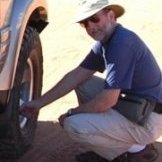
I have to ask - What happened to Buzzy?
John E Davies replied to Overland's topic in General Discussion
Hi Explorer7, I sure do understand your wanting to drop over the horizon to simply enjoy your Ollie in peace. I used to have a personal website filled with motorcycle articles, and after a few years I was getting overwhelmed with unwanted attention and questions. It gets old REALLY fast. So last Fall I let my domain name quietly expire and I too am now Anonymous, at least in terms of people wanting stuff from me over the Internet. I hope you will pass on to your close friend Buzzy that he and his dog are always welcome at my campfire or at my home. Keep this in mind as you wander out West. Maybe we could meet up during the Great Eclipse. I hope you will be out here, and will let us know where we might find you. I have really enjoyed talking with you here, we will all miss you! PLEASE do not totally abandon this place. Pop in every now and then to say hello. Happy trails. John Davies Spokane WA -
http://www.fiveina5th.com/landing/top-4-tpms-systems-comparison/ I caution that anybody planning to drive in inclement weather or on harsh paved or unpaved conditions be sure to pick a system with sealed transmitters (pressure sensors) to avoid water entry and corrosion. I plan to order this one - it is highly regarded in the offroad community (Australia) - read the last link for a though "harsh environment" review in the Outback. Plan on replacing all the sensors every five years. Yes, that will be expensive. Consider it to be Extended Road Hazard Insurance. https://www.rvupgradestore.com/Doran-360RV-Tire-Pressure-Monitor-4-Sensor-p/360rv4.htm https://www.rvupgradestore.com/Doran-360-RV-Wireless-Tire-Pressure-Sensor-p/3602.htm https://www.exploroz.com/Members/33714.000/5/2014/Tyre_Pressure_Monitor___Doran___360__Review_.aspx Notice that you can get Doran kits with up to 14 sensors, so you can retrofit an older TV that does not have a factory TPMS. I would not bother adding a fifth sensor for the trailer or TV spare. It will not suddenly fail, and you can just check it every month or two with a good gauge to make sure it has not leaked. You do still need to check your trailer and TV tires with a gauge periodically. The sensor readings are not that accurate. John Davies Spokane WA
-
I'll repost this comparison Powerpoint in case you haven't seen it already. http://www.tvformyrv.com/content/AtwoodACPresentation2014.pdf It's pretty compelling. I also just found the complete Air Command service and repair manual! Woohoo! http://www.bdub.net/manuals/AtwoodRoofACRepair.pdf John Davies Spokane WA
-
According to the manual for the larger unit, heat pump operation is for outside temperatures above 45 degrees F. http://www.atwoodmobile.com/manuals/ac/MPD_15078_AC_IOM_DUCTED_%2012_03_2014_Rev_8.pdf You could always install a small forced air electric wall heater to replace the furnace when you are powered up. http://www.homedepot.com/p/Cadet-Com-Pak-1-000-Watt-120-Volt-Fan-Forced-In-Wall-Electric-Heater-in-White-CSC101TW/100078620 I really don't think you need to worry about propane consumption, from what I have heard here! I would worry about supplemental heat if and when propane use became an issue. However, an electric one of some kind would be great for winter storage if you do not have your trailer in a climate controlled shelter. John Davies Spokane WA
-
No action, I do not expect to use it very often anyway. It is really just for those rare killer summer heat waves where it hurts to breath. Even if you go up to 6000 ft in the Idaho mountains, it can still be unbearably hot. Sometimes you just have to rent a parking spot and plug in... especially if you are stuck at low elevation or find yourself in the desert. We visited California three years ago in early summer and it was 108 passing through the very northern part of CA on Hwy 97 from Klamath Falls. We certainly did not expect that level of heat, but we were not camping at the time. I'm sure that we would have plugged in an Ollie, had we been towing one, just for some relief. I don't know how you guys living way south deal with it. I would melt. John Davies Spokane WA
-
I ordered the smaller rooftop unit - it is an extra $65. There are two drawbacks that Jason pointed out. The Air Command is not compatible with the built in Oliver condensate drain, so water will run down the outside of the trailer. The regular Heat/ Cool thermostat won't work, I do not know the reason, so a separate one for the air conditioning is required. Neither of those is a problem for me in any way. I did not need or want a heat strip. The main reason I wanted this brand is the superior design, with two variable speed fans instead of one big fixed speed fan. The result is very quiet operation with notably lower energy consupmtion. Plus it was perfected in Australia - that us always a great recommendation for any product. John Davies Spokane WA
-
I read somewhere that a few have been sold, but I don't know anything concrete. Maybe they are among the owners that are either ignorant of this forum or just choose to not participate. I won't be able to look at mine for another 3 months. It sure would be nice if Oliver could post a couple of pictures and a brief description of the installation. EDIT. Found the current draw: 1.7 amps at 12 VDC. That is a lot higher than I expected. The airflow direction is reversable. John Davies Spokane WA
-

Issues Posting
John E Davies replied to MDuncan's topic in How to Join and Use Oliver Travel Trailer Forums
I can post OK but the upload and download speed is _agonizingly_ slow in Safari, and only marginally better in Firefox.... Safari keeps giving me "Error in connecting with database messages". NO other websites are doing this - it is yet another Oliver Forum issue. I don't understand why it is so darned hard to keep this running smoothly. Not good at all. It just pisses people off, and that is bad manners. John Davies Spokane WA -
Does anyone know how the head is vented? It needs an outlet for the stinky part - the inlet is the toilet lid area. I suspect that the outlet flex hose ties into the standard roof vent, under the platform, for the (installed but unused) black tank, but I am making an educated guess. Is the top of the black tank capped? If I end up using this tank for extra water storage, I guess I would then need to add a new vent/ overflow hose at the top.... Where is the Naures Head fan switch located? How many miliamps does it use? Any pictures to share? Thanks, John Davies Spokane WA
-

Fun and Funny Sights along the road...
John E Davies replied to SeaDawg's topic in General Discussion
Please consider PMing me if you come through the beautiful Spokane area. I would love to meet you guys and pick your brains about Olivers. You can use my driveway for an overnighter or three, or you can try the scenic Bowl and Pitcher Campground along the Spokane River, which is just a few easy minutes drive from my house. My driveway has better rates, just ... conversation. http://www.stateparks.com/riverside_state_park_in_washington.html Depending on your timing, you might catch the river in full flood. Here is the Bowl and Pitcher day use area suspension bridge: And here is the Upper Falls in downtown Spokane: The last shot shows the pedestrian bridge which was closed to foot traffic for a couple of days, when somebody noticed a ten foot log that had been thrown up onto the center of the span... ;) John Davies Spokane WA -
Cool, I visited with my wife and two very young kids in 2002 for ten days and we all loved it. We lived by camping out of the back of a Ford Falcon - the caravan parks are simply wonderful and at that time the exchange rate was extremely favorable so everything was dirt cheap. Ballarat and Sovereign Hill town are fantastic. The Blue Mountains are neat, we all went rough horseback riding there. In your trips there do you recall seeing a Stone Stomper or similar ballistic cloth guard on a caravan, and can you comment on the design? I really want one. Nobody in this country really has a clue about them... We have been manufacturing the Stone Stomper® stone guard for over 6 years, but have spent over 9 years testing the trapeze style stone guard as part of our travels around Australia. To date we have travelled over 200,000 kms using the Stone Stomper® with virtually no stone damage to our car or van. This includes the Gibb River Road, Cape Leveque, Tanami Desert, Donohue Highway/Plenty, Buchanan Highway, Gawler Ranges, Murray Sunset National Park just to name a few. Our most recent trip took us from Adelaide through Tibooburra via the dog fence up to Lawn Hill NP and Kingfisher Kamp. Coming home we travelled the Savannah Way and ended our trip with a trek along the Darling River Run. 5,000km of great out back dirt roads and no stone damage. A key benefit of the Stone Stomper® is it not only protects the vehicle but the complete A frame, gas bottles, gas and brake cables, coupling and the front of the van. It also stops tar stains on the van from the bitumen and in the wet, keeps the front of the van clean from road spray thrown up from the tow vehicle deflecting to the ground. Stone Stomper® is not just for off road. How many times do you come across road works on the bitumen with wet tar and stones only to be diverted to a dirt bypass. You may not plan to go off road on your trip but your plans may change along the way as my Dad found out on a recent 3 month trip up to North Queensland. He had no plans to do any dirt roads with his new on road Jayco Sterling. Along the way however, he was told a 'must see' was Lawn Hill National park requiring a 180km of dirt roads. He was glad he had fitted a Stone Stomper® before he left, keeping his car and van looking new. The mesh is not shade cloth, but a reinforced ONE PIECE Truck Mesh that is manufactured by our professional canvas makers. Each order is custom made to fit individual measurements ensuring maximum protection. All metal work is laser cut and electroplated for durability. http://stonestomper.com.au Could you please start a new thread or provide a link to your Australia trips? I would love to see a few pictures, well, no, lots and lots of them! Thanks. John Davies Spokane WA
-
Sherry, the Rock Tamer info is not present in the US instructions, unless they recently added it. The Australian ones definitely warn about this issue. " PERFORMANCE: The static angle of the flaps can be increased up to 35 degrees from the vertical. This will enhance the performance of the flaps and help eliminate the chance of stones re-bounding back onto the tow vehicle. When traveling the flaps need to be sitting at about 45 degrees to be effective. Adjusting the static angle will help achieve this." http://rvtowingsolutions.com.au/product-details/rock-tamers-instruction-manual I also added strips above the regular flaps, in contact with the bumper, in an attempt to fill the gap and stop stones from accumulating on top of my bumper. I used the cut-off 2 inch strips of rubber from when I trimmed the RTs originally. Even with them flying at an angle and with the added filler strips, I am not impressed with them and am eager to get a Stone Stomper for my future Ollie. My big objection to most mud flaps is that if they are long enough to provide decent coverage, say extending to within 4 inches of the ground, if you hit a dip in the (gravel) road at speed, they kick up a momentary and very ferocious rooster tail of rocks. If you run them higher, they just don't stop enough stones the rest of the time. John Davies Spokane WA
-

Fun and Funny Sights along the road...
John E Davies replied to SeaDawg's topic in General Discussion
The Dog Bark Park Inn (B&B and chainsaw dog art) in the Idaho Panhandle, half way between Spokane and Boise: The last time we went by we bought a small beagle carving and it makes me laugh every time I look at it. http://www.dogbarkpark.com/giftshop/ If you are driving through there is is impossible to miss unless you are asleep. John Davies Spokane WA -
Has anyone done this? Anita told me that they did install one set on a Canada bound Ollie since they are required by law there. The owner brought by a set and the gang installed it there at delivery time. This is going to be one of my very first projects. I think that the rear (side) water connections and, more importantly, the rear stabilizer shafts need protection from road spray and thrown debris. I plan to install big ones behind the rear wheels and also some long strips clear across the trailer, in front of the front axle, to stop the suspension and axle tubes from being sand blasted. The latter are simple enough since you can just hang them directly off a frame cross rail. You can buy fabric reinforced material in big sheets made from recycled tires at any urban rubber products supplier. The 1/8 inch stuff is fine for most uses but it is very flexible, so it will sail at higher speeds. Something like this: That is actually good for the flaps under the trailer - you want the flaps to ride at a steep angle to the road (up to 45 degrees) so that stones will bounce down onto the road and not back toward the TV. This is why Rock Tamers are supposed to be adjusted so that they are not hanging straight down. http://www.rubbercal.com/industrial-rubber/heavy-duty-rubber/cloth-inserted-sbr-70a.html A thicker size would probably be better behind the tires. Those might be more difficult to design and they will require some brackets. I would appreciate any comments, suggestions or pictures. Getting them to clear the jacks and also to extend out far enough to catch stuff thrown off the tires will be the problem. Jason is supposed to be working on figuring this out, but I don't think he is really motivated, as I am ;) Please discuss. John Davies Spokane WA
-

Maintenance of Front and Rear Jacks
John E Davies replied to donbob3's topic in Mechanical & Technical Tips
I don't have a jack to look at, yet, but this task should be very straight forward. It isn't rocket science, you just need to make sure that there has been no water intrusion and that the grease is good. The electric switch cover comes off with a couple of side screws, then you can swing that out of the way and get to the gearbox cover. Remove the four corner screws (going down into the lower unit) and carefully lift off the cover. The reduction gears may come up with the cover, or they may stay down in the lower part.If it looks pretty and greasy inside, reassemble and go grab a cold one. If the lube is contaminated with water (milky) or dry looking, you need to clean it all out of there and add new grease. Lift out the gears and be sure to lube the shaft bushings really well. Add silver anti-seize compound to the cover screws to keep them from corroding. I see grease on the outside of the telescoping part in the Oliver pictures. I personally would NOT do that , since it will just attract and hold dirt that will then act like valve grinding compound - NOT good. Clean and dry is better here, IMHO of course. If you never drive off pavement, then you can grease them. Don't forget to look at the rear jacks, but being in a protected environment, I doubt they will ever need much attention. I think it would be smart to write down on a nearby surface the date you look at them, just for future reference. Please post some pics if you do this, for those of us who don't yet have trailers to play with. I am sure Buzzy is working on a video.... as I type! https://www.barkermfg.com/uploads/5/4/9/4/54943161/_vip_3500_all.pdf BTW, if you haven't read those instructions yet, they do tell you how to adjust the bubble level screws so that it reflects the true level of your floor. Also, I think buying three cover gaskets and maybe some spare screws would be good for the spares kit, in case you need to replace some parts during servicing. Don't reuse a questionable gasket. Good luck. John Davies Spokane WA -

Where to carry spare gas for the generator?
John E Davies replied to John E Davies's topic in Ollie Modifications
I had actually thought about that, for the generator, and I have ordered a pair of access hatches for my build, to start in about ten days! I think I could get a couple of the two gallon Rotopax in there through a side hole, but that isn't near enough fuel to use for topping off the truck. Also, I am concerned about adding a lot of tongue weight since with a Land Cruiser I would not be using an equalizing hitch off pavement. It can take a max of 850 pounds deadweight, but I prefer to keep it at about half that. I guess that if I mounted two cans on the tongue, and two on the Ollie's bumper, it would balance out..... when all the cans were either full or empty It would also give me a certain amount of ballast control. For example, if the propane tanks are full I could leave the front cans empty and carry full rear cans. If the propane and the water tanks are low, I could carry full cans on the tongue. Kinda like a movable water ballast system in a racing sailboat. ;) John Davies Spokane WA -

Where to carry spare gas for the generator?
John E Davies replied to John E Davies's topic in Ollie Modifications
I'm revisiting this topic. Any other comments or suggestions? I may be changing tow vehicles eventually, to a Land Cruiser 200, and I like the idea of carrying 10 to 15 gallons of extra gas on the Ollie. The idea being, we drag the trailer back into the boonies, disconnect the trailer, top up the fuel tank on the Cruiser and go off to explore. I wouldn't normally need to carry extra fuel directly on the truck, and that would require an aftermarket bumper with can racks, an expense that I do not wish to make, or an expedition roof rack, ditto.... Maybe I should just carry two or three steel NATO cans on the tongue, on a heavy plate where the generator box would go? I don't think much of the location due to the extra tongue weight and the messy environment, but maybe that makes the most sense. It would certainly make the cans much safer in the event of a collision. Mounted on the tongue, it would be possible to pump the gas directly into the truck, without having to take them off and manhandle them, which is always a painfully awkward experience. This might do the trick... https://www.amazon.com/Gastapper-Electric-Gasoline-Transfer-Equipment/dp/B01MS4T9OD/ref=sr_1_fkmr1_1?ie=UTF8&qid=1486503788&sr=8-1-fkmr1&keywords=12+v+fuel+transfer+pump+gt+Max Thanks for any suggestions, other than "convert your generator to propane" ;) John Davies Spokane WA -

Wrenches...what do you carry in your tool box?
John E Davies replied to Mainiac's topic in Mechanical & Technical Tips
While I have never needed a grinder, I could have used a boulder blasting setup a few times. Though I doubt that the Feds would approve. I think it's only legal on private land..... it doesn't really fit into the Tread Lightly, Leave No Trace philosophy. John Davies Spokane WA -

Wrenches...what do you carry in your tool box?
John E Davies replied to Mainiac's topic in Mechanical & Technical Tips
You know, it is very interesting to see that you do extensive mining and have sophisticated tools that the average trailer owner could not even imagine in his dreams, or perhaps afford, but the info is neither constructive nor applicable to the thread in any way that I can see.... what exactly was your point? I suggest that an owner buy a small military style canvas tool bag .... https://www.amazon.com/Northstar-Mil-Spec-Mechanics-Tool/dp/B00GGHOQP6 ... and a set of 4 pouches .... https://www.amazon.com/Klein-Tools-5140-Canvas-Zipper/dp/B000MKDUKU/ref=sr_1_1?ie=UTF8&qid=1486310682&sr=8-1&keywords=klein+tools+canvas+tool+bag ... and then start filling it up with as wide an assortment of basic SAE and metric hand tools as you can. The pouches neatly fit in the bag (vertically, zipper up), do not tear like freezer bags, and allow you to carry all the small stuff like sockets without having them all fall to the bottom. You can lable the bags SAE, Metric, Pliers, etc for easy identification. Big stuff like a crescent wrench, short handled 4 lb sledge hammer, punches and big screwdrivers all ride on the bottom. A small stack of rags on top completes the setup. That will give you an easily carried and useful kit that will help with most routine and emergency work on both trailer and TV. The soft bag means it can't slide and bang around and it is super easy to move between vehicles. In a storage compartment of your Ollie, or in the TV if you have space, add a 1/2 drive impact socket set and some big wrenches, and an electric impact gun ... https://www.amazon.com/dp/B00BWFIKJA/ref=wl_it_dp_o_pd_nS_ttl?_encoding=UTF8&colid=77ELCXYF0Y8I&coliid=I1SI14Q3H1M8YZ ... and you should be OK. This assumes that you have the ability and basic skill needed to use them. Of course you need a lube and spares kit too. Fuses, Wheel bearing grease and a bearing kit for one hub, nylon ties small and large, and some pipe fittings and hose clamps are essential. Everything else is whatever floats your boat. ;) The further you venture away from help, the more stuff you need to add to your tool set. John Davies Spokane WA



